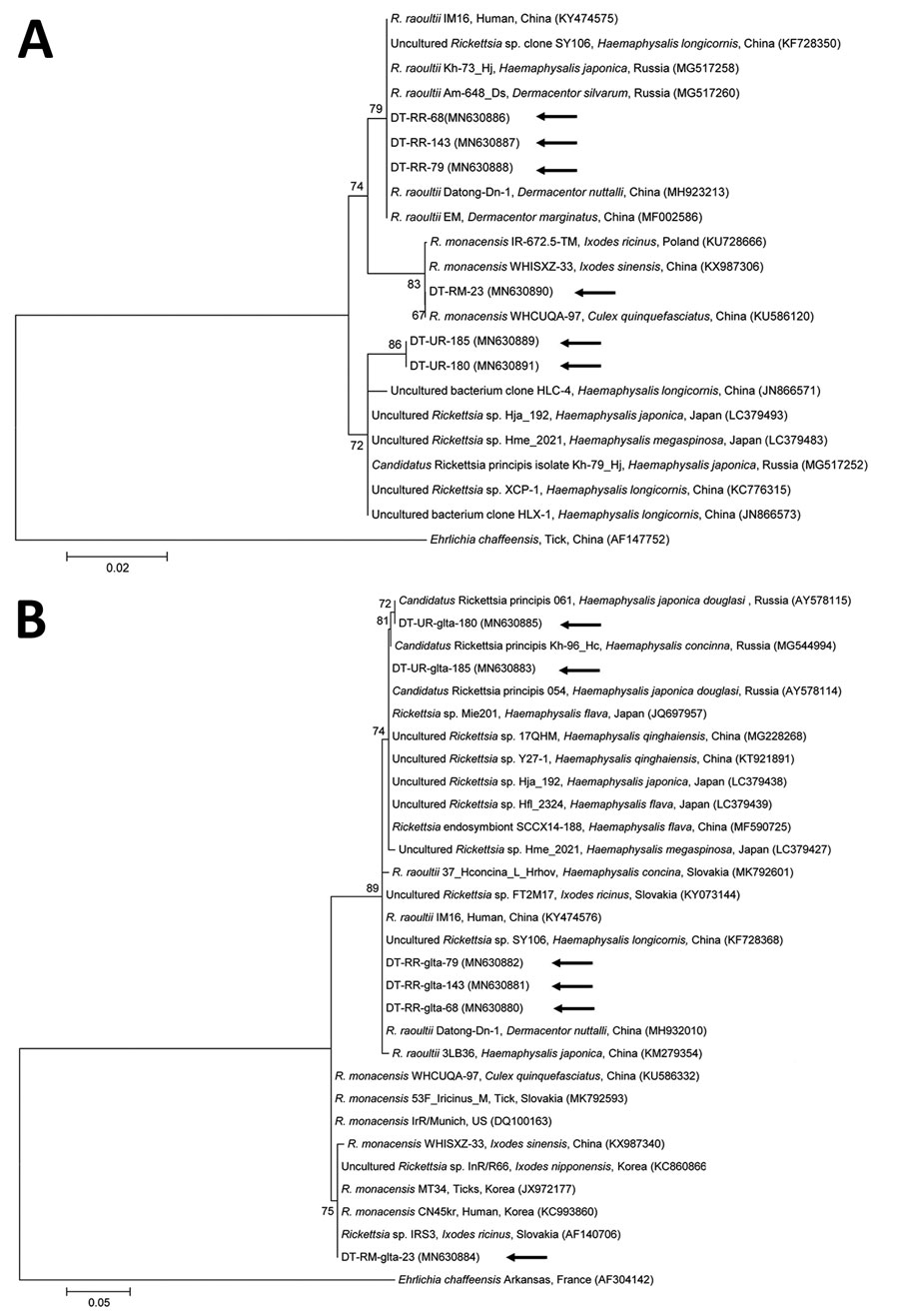Volume 26, Number 10—October 2020
Research Letter
High Prevalence of Rickettsia raoultii and Associated Pathogens in Canine Ticks, South Korea
Figure

Figure. Phylogenetic trees constructed using the maximum-likelihood method based on nucleotide sequences of Rickettsia spp. from canine ticks, South Korea (black arrows), and reference sequences. A) 16S rRNA; (B) gltA. Ehrlichia chaffeensis sequences were used as outgroups. GenBank accession numbers for reference sequences are shown with the sequence name. Branch numbers indicate bootstrap support (1,000 replicates). Scale bar indicates phylogenetic distance.
Page created: September 07, 2020
Page updated: September 17, 2020
Page reviewed: September 17, 2020
The conclusions, findings, and opinions expressed by authors contributing to this journal do not necessarily reflect the official position of the U.S. Department of Health and Human Services, the Public Health Service, the Centers for Disease Control and Prevention, or the authors' affiliated institutions. Use of trade names is for identification only and does not imply endorsement by any of the groups named above.